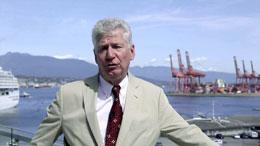Canadian pension funds invest $25 billion in Asia

By Mata Press Service
Canada’s largest pension funds are fixing their gaze on Asia Pacific to fund the beachfront retirement dreams of today’s workers, says a new report.
The report, released by the Asia Pacific Foundation of Canada (APFC), found that between 2003 and 2017, Canadian pension funds invested $25 billion in the region, with the Canada Pension Plan Investment Board, the Ontario Teachers’ Pension Plan Board and the Caisse de dépôt et placement du Québec is the top three investors.
This new and growing focus by Canadian pension funds has two important implications:
1) it means that Canadians’ retirement financing is increasingly tied to the large and growing economies in the Asia Pacific, and
2) it means that Canada’s state-owned pension funds are becoming a major direct investor in the region.
The pension funds are focusing their investments on key markets that contain an increasingly large share of the world’s middle-class consumers, such as India and China, said APFC.
As consumption grows in the world’s two most populous countries, the bottom line of Canadians’ retirement packages may benefit from the increased performance of the pension fund investments in these economies.
At the same time, Canadian pension fund investments are also providing necessary capital to help facilitate growth in key sectors in Asia.
Investments in sectors such as real estate and logistics are currently the way in which these pension funds are tapping into these high-growth markets.
It looks like, at least for the immediate future, tying Canadian pensions to Asia is paying dividends on both sides of the Pacific, the report concludes.
The pension analysis was part of the recently released APF Canada Investment Monitor, a database and interactive web-based tool that tracks investment ties between Canada and the Asia Pacific at the enterprise level.
The report captures C$192 billion of Canadian investment through 2,073 deals by 1,098 Canadian companies in 27 Asia Pacific economies from 2003 to 2017.
“The centre of economic gravity has shifted to the Asia Pacific region and Canada must understand the nature and scope of the unique opportunities that exist for investment,” said APF Canada President and CEO, Stewart Beck.
“The APF Canada Investment Monitor 2018 provides the necessary analysis and understanding of trends to assist our thought-leaders in making informed policy and investment decisions for existing and emerging Asian markets.”
Highlights of the Investment Monitor 2018: Report on Canadian Investment in the Asia Pacific include:
i) Pension funds are emerging as drivers of Canadian investment, growing from 1 percent of Canada's total investment value in 2003 to 2007 to 25 percent in 2013 to 2017;
ii) Canadian investment in China has declined since 2008, with most of that Canadian investment in the financial services sector;
iii) Ontario, British Columbia, Alberta and Quebec account for 99 percent of Canadian investment in the Asia Pacific, with Ontario-based companies being the major investor, accounting for 60 percent.;
iv) The value of mergers-and-acquisition investment in the Asia Pacific has grown from 18 percent of Canada's total investment in 2003 to 2007 to 50.2 percent in 2013 to 2017, overtaking greenfield investment;
v) Australia, China, and India are the main destinations of Canadian investment in the Asia Pacific.
vi) Investment in India into consumer-driven sectors has been on the upswing since 2010, as Canadian firms position themselves to capitalize on the country’s projected consumption growth in the coming years;
vii) Investment in Australia has been steadily rising since 2013, mainly in the natural resources sector, with a specific focus on mining companies.
The research report also found that there are two distinct patterns of investment for Canadian companies in the Asia Pacific.
The first is Canadian investment in natural-resource-based industries, which is the defining characteristic of the Canada-Australia investment relationship.
The second pattern is focused on investing in companies that are targeting the growing needs and desires of the burgeoning middle class, such as in India and China.






